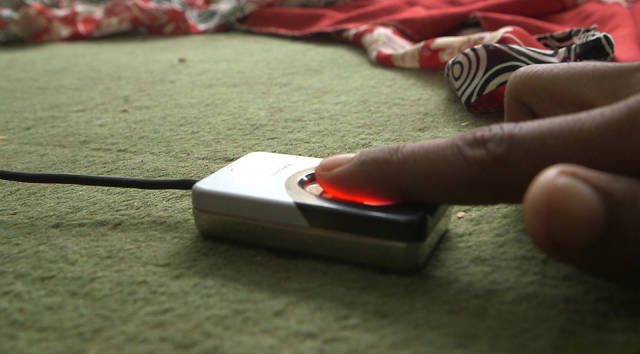Tuberculosis is a treatable and curable disease, but it remains a health concern in many countries in the developing world. In India it claimed more than 300,000 lives in 2011, even though medication, subsidized by the government, is free. In many cases, TB wins out because patients don’t complete their full course of treatment--though there is no cost, it is a rigorous regimen which involves pills three times a week for up to eight months. If patients don’t take all their pills, they risk developing a stronger, drug-resistant form of the disease which is harder to treat.
To help patients stay on track, the WHO and governments around the world have been supporting a scheme called Directly Observed Therapy. It’s like having a personal trainer when you exercise, Microsoft researcher Bill Thies explains. Patients are paired up with "observers," often health workers at a local clinic. Patients report to the clinic for every dose and the health worker records that pills are taken, and taken on schedule.

With Operation ASHA, a health organization specializing in tuberculosis treatment, Microsoft Research has developed a method of tracking these rendezvouses between health worker and patient. The technique shows early indications that it’s convincing patients to come in and take their meds. So far, the new system has reached 3,000 patients in 40 centers across the country, and Operation ASHA’s target is to take it to 225 centers around the world.
At local health clinics, workers are equipped with a fingerprint scanner, an SMS terminal, and a small laptop. When a patient comes in for their treatment at the appointed time, they scan their finger, which updates a database at the parent organization by SMS. If a patient skips a visit, the missed finger scan triggers a tattling text message within 24 hours.
Thies, the Microsoft Research lead on the project, says the scanners are already working their charm. The team surveyed health workers and supervisors, and learned that patients are more likely to visit health centers that have biometric scanners. Part of this, Thies explains, has to with the health workers being more persuasive when they have the scanner by their side. “It gives [the health worker] the flexibility to say: ‘Look, I’m on your side, but look at this evil machine sitting on my side, I need you for my sake to come and scan your finger,’” he says.
The system has also allowed health workers to feel more empowered, and motivated to do a better job. With a fail-safe method to track their patient charges, they can now be held accountable for the patients they were treating. Previously, it was “like a postal worker expected to do his job without having a tracking number on the package,” Thies says. If a patient misses their appointment, a health care worker is responsible for visiting their home and treating them there. With a secure tracking system in place, health care workers are now more likely to make that trip.
Thies says that the tracking system has broader benefits beyond the immediate value of ensuring more patients complete their regimens. It raises the bar for the quality of records that can be kept and data that can be obtained from dispersed treatment schemes that involve many links in a chain. This treatment system could be extended to track vaccination schedules for children, or HIV treatment, or other health issues that need consistent and fail-safe monitoring.in











No comments:
Post a Comment